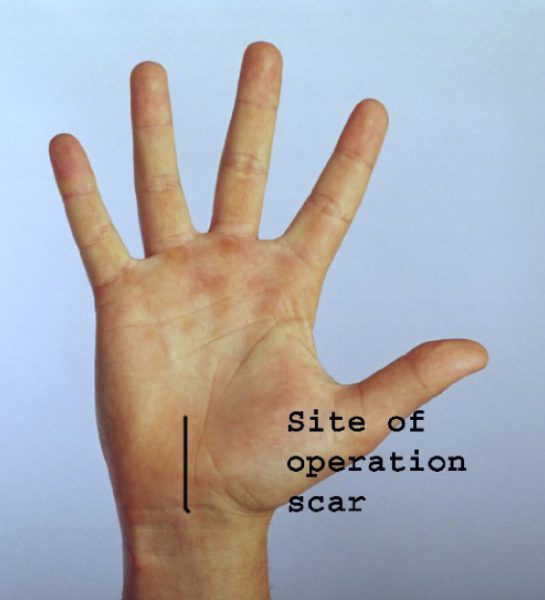Carpal Tunnel Syndrome is a very common condition affecting the hand. The main skin nerve of the hand (median) passes through a tight tunnel to supply the skin of the palm and the thumb side of the hand. Any condition that makes this tunnel smaller or the structures within it to take up more space will result in compression of the nerve. When this happens it causes tingling, numbness and aching symptoms. Releasing the roof of the tunnel relieves the symptoms quite quickly but if the nerve has been squashed for some time this may take a long time to recover. In a few cases it does not fully return to normal.
The operation is done as a day case, usually with a local anaesthetic. During the operation your hand is prepared with antiseptic solution and a tourniquet is put on your arm, similar to a blood pressure cuff. The cuff is uncomfortable but is only inflated for 5 to 10 minutes. After the operation your hand will be bandaged for the first 48 hours. A dressing is used to keep the wound clean and dry until the stitches are removed. These are usually removed at your own GP practice 7 to 14 days after your operation. Painkillers are often not needed but you will be given some if required.
You will be encouraged to keep your hand elevated for the first few days after surgery and to move all of your fingers straightaway.
Some people have tender areas in the wound after it has healed, most of these settle with local treatment. It is a straightforward operation with at least 90% success rate. If you have any questions about your operation please don’t hesitate to ask your surgeon when you sign your consent form.
Download the information on this page as a PDF
Download